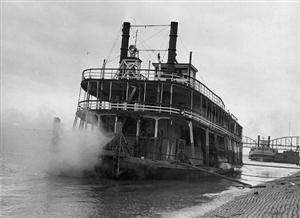Words of Wisdom from SharLeigh
AMERICA’S FIRST INTERSTATE
HIGHWAY SYSTEM
At over 2,300 miles long, the Mississippi River is the second longest river in the United States (the Missouri River is just slightly longer, and is a tributary to the Mississippi). This mighty river begins at Lake Itasca, Minnesota, and flows slowly southward in sweeping meanders, terminating just south of New Orleans, Louisiana, where it flows into the Gulf of Mexico. The river was first discovered by the Spanish explorer Hernando De Soto in 1541. By the 17th century, the French explorers Marquette, Jolliet and LaSalle had explored the river, and when LaSalle finally reached the mouth of the Mississippi, he claimed the whole territory for France in 1682. In 1803, eager for monies to finance his war machine, Napoleon offered to sell the area, which totaled 828,000 square miles, for the sum of $15,000,000. President Jefferson was anxious to close the deal known as “The Louisiana Purchase” – which doubled the size of the United States. As the United States grew, so did the commerce on the Mississippi River. Arks, barges, flatboats and keelboats began making trips up and down the river. Once the advent of steamboats fully arrived on the river, around 1830, traffic increased. Before the steamships, the trip from St. Louis to New Orleans took four months, but by steamboat it only took six days. By the 1940s, the yearly tonnage shipped on the Mississippi was 30 million tons and, today, it has increased to nearly 500 million tons per year. Much of this tonnage is hauled by 10,000 horsepower towboats that pull barges of gas, oil, grain, fertilizer, industrial chemicals, lumber, sand, gravel, steel and coal. Since the dawn of civilization, the Mississippi River has been instrumental in creating this great land. And, thankfully, the thousands of miles of this “natural interstate highway” just keeps on flowing!
